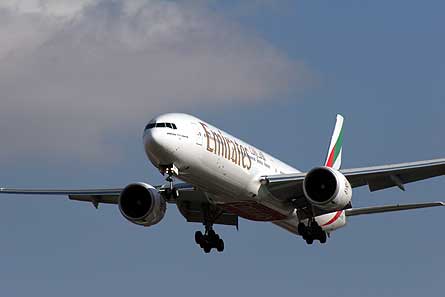Emirates plans to operate the first global cross-polar green flight on its service launch from Dubai to San Francisco on 15 December.
Working with the governments of Dubai, Russia, Iceland, Canada and the US Emirates is seeking optimal routings for the aircraft and a possible continuous descent approach to minimize fuel burn.
The carrier aims to save roughly 7,570 litres (2,000 usgal) of fuel and 30,000lb (13,607kg) of carbon emissions on the 16 hour flight.
Other fuel and emission saving procedures planned for the flight include a special washing pre-flight to minimize drag, a pre-planned priority departure route from Dubai supplying unimpeded climb to cruise altitude and minimal thrust on landing and single engine taxi to the gate.
 | |
|---|---|
Recently-concluded negotiations with the Russian government will allow Emirates to operate the most efficient route over Russian and Canadian airspace taking prevailing winds and aircraft weight into consideration.
Emirates explains predominant traffic flows across northern Europe are west-east, but since 2001 the carrier has worked closely with the Russian Federal Air Navigation Authority to optimise the structure to flow north-south.
"To date 16 additional segments have been added to allow the flights to pick the best route available on the day dependent on the winds," the carrier explains.
The 777-200LR flown from Dubai to San Francisco also plans to track close to the North Pole following the carrier's work with manufacturers to open the new route.
Carrier president Tim Clark says: "The development of new technologies, flight operation procedures and advanced air traffic management proves that our industry is making real gains in environmental performance."
Due to the 57-day machinists strike earlier this year at Boeing, Emirates inaugural Dubai-San Francisco flight was delayed from 26 October to mid-December.
Source: Air Transport Intelligence news























